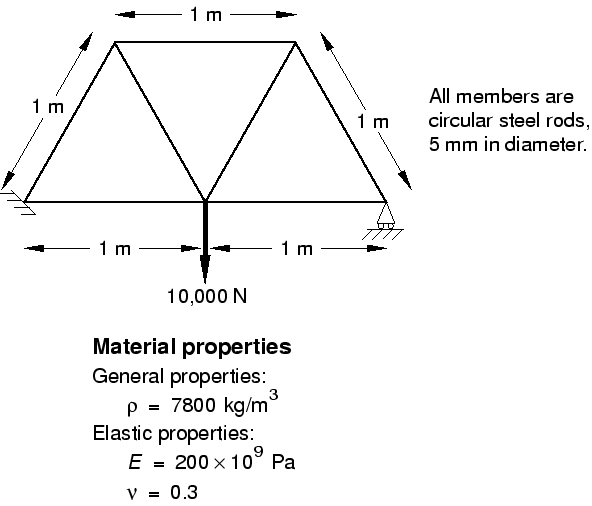Overhead hoist analysis | ||
| ||

For the overhead hoist example, you will perform the following tasks:
-
Sketch the two-dimensional geometry and create a part representing the frame.
-
Define the material properties and section properties of the frame.
-
Assemble the model.
-
Configure the analysis procedure and output requests.
-
Apply loads and boundary conditions to the frame.
-
Mesh the frame.
-
Create a job and submit it for analysis.
-
View the results of the analysis.
Abaqus provides scripts that replicate the complete analysis model for this problem. Run one of these scripts if you encounter difficulties following the instructions given below or if you wish to check your work. Scripts are available in the following locations:
-
A Python script for this example is provided in Overhead hoist frame. Instructions on how to fetch the script and run it within Abaqus/CAE are given in Example Files.
-
A plug-in script for this example is available in the Abaqus/CAE Plug-in toolset. To run the script from Abaqus/CAE, select ; highlight Overhead hoist frame; and click . For more information about the Getting Started plug-ins, see Running the Getting Started with Abaqus examples.